Idea Lunch
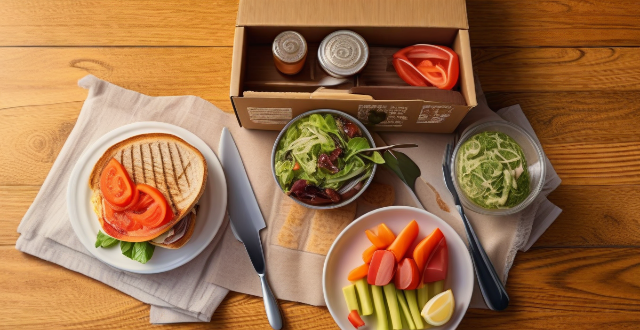
How do I keep my lunch box from getting soggy ?
Packing a lunch can be a healthy and cost-effective option, but no one enjoys opening their lunch box to discover soggy sandwiches or wilted salads. Here are some tips on how to keep your lunch box fresh and dry throughout the day.
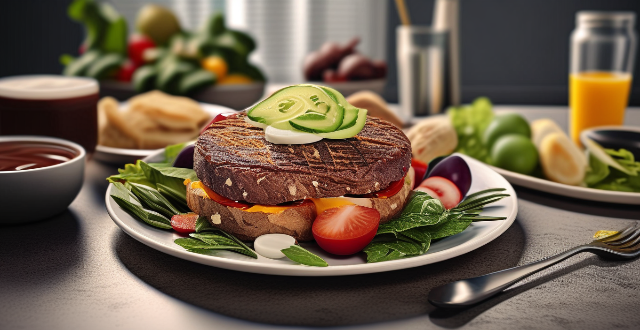
Can exercising during lunch breaks improve work performance ?
Exercising during lunch breaks can improve work performance by boosting energy levels, reducing stress and anxiety, improving mood, enhancing cognitive function, and promoting better sleep quality. To incorporate exercise into your routine, plan ahead, set realistic goals, find a workout buddy, be mindful of time, and make it fun!

How can I ensure my lunch box stays cold until lunchtime ?
Keeping your lunch box cold until lunchtime is essential for maintaining the freshness and safety of your food. Here are some tips on how to ensure your lunch stays cool: 1\. Use a high-quality insulated lunch box with thick insulation and a secure lid that can trap cold air inside. 2\. Add ice packs or freezer packs to help keep it cold. Make sure they are clean and properly sealed before placing them next to your food items. 3\. Freeze your food overnight before packing it into your lunch box to help keep everything cold throughout the morning and early afternoon. Just be sure to thaw it slightly before eating so it's not too hard to chew. 4\. Store your lunch box in a cool place like a pantry or refrigerator instead of leaving it out on the counter where heat from appliances might warm it up. 5\. Avoid opening your lunch box too often, as every time you open it, you let warm air in and cold air out. Try to resist the temptation to peek inside unless necessary. 6\. Use a chilled snack container within your lunch box for snacks like fruits, vegetables, or yogurt, so even if your main meal gets slightly warmer, your snacks will still be refreshingly cool. 7\. Consider investing in a portable refrigerator or cooler bag specifically designed for food storage if you need your lunches to stay cold for extended periods. These devices typically use either ice or electronic cooling systems to maintain low temperatures. 8\. Plan ahead and eat early if your schedule allows, as the longer your lunch sits at room temperature, the less likely it is to remain cold and safe to consume.

What are some good ideas for quick lunches ?
When it comes to quick lunches, there are plenty of options that are both healthy and satisfying. Here are some ideas: 1. Sandwiches: Peanut Butter and Jelly, Turkey and Cheese, Hummus and Veggie Wrap 2. Salads: Greek Salad, Chicken Caesar Salad, Quinoa Salad 3. Soups and Stews: Tomato Soup, Chicken Noodle Soup, Vegetable Stew 4. Pasta Dishes: Spaghetti with Marinara Sauce, Macaroni and Cheese, Pasta Salad 5. Breakfast for Lunch: Egg and Cheese Sandwich, Oatmeal, Yogurt Parfait These are just a few ideas to get you started on your quick lunch journey. Remember to mix and match ingredients to create your own unique combinations!

What are some tips for packing a balanced lunch box ?
When packing a lunch box, it's essential to include a variety of foods from different food groups to ensure a balanced meal. Here are some tips for packing a nutritious and satisfying lunch box: 1. Start with a protein source like lean meats, seafood, or plant-based proteins. 2. Include whole grains such as whole wheat bread, brown rice, or quinoa. 3. Add fruits and vegetables like fresh or dried fruits and crunchy vegetable sticks. 4. Incorporate dairy or non-dairy alternatives like yogurt, cheese, or almond milk. 5. Don't forget healthy fats from nuts, seeds, avocado, or olives. 6. Include snacks and desserts like trail mix, granola bars, or dark chocolate. 7. Stay hydrated with water, herbal tea, or coconut water. 8. Pack smart by using reusable containers, ice packs, and divided lunch boxes. By following these tips, you can create a lunch box that is not only delicious but also provides the necessary nutrients to keep you energized throughout the day.

Can you recommend any tasty and healthy low-calorie soup recipes for lunch ?
Here is a topic summary for the text: The text recommends three tasty and healthy low-calorie soup recipes for lunch. The first recipe is Tomato Basil Soup, which is low in calories and packed with vitamins and antioxidants. The second recipe is Carrot Ginger Soup, which is healthy and comforting with a sweet and spicy flavor. The third recipe is Broccoli Cheddar Soup, which is a bit higher in calories but still a healthy and delicious option with a rich and flavorful taste. All three recipes are easy to make and can be enjoyed as a satisfying and nutritious lunch option.

What are some good options for gluten-free lunch box meals ?
Gluten-free lunch box meals offer variety and nutrition for those with dietary restrictions. This guide suggests sandwich alternatives, protein-packed options, vegetable-focused meals, grains and legumes, and desserts and snacks that are gluten-free. It encourages creativity in meal planning to ensure enjoyable and nutritious midday meals.

What are the best containers to pack a lunch box ?
The text discusses the importance of choosing the right containers for packing a lunch box, highlighting durability, leak-proofness, ease of cleaning, and safety for food storage as key considerations. It then presents five types of containers: glass, stainless steel, plastic with lids, bento boxes, and silicone bags, detailing their pros and cons in terms of non-toxicity, weight, microwave and dishwasher safety, versatility, and durability. The conclusion suggests that the best container depends on individual needs and preferences, advising consideration of factors like durability, safety, and suitability for intended use when making a decision.

Can you suggest any easy-to-make lunch box recipes ?
The text provides a list of easy-to-make lunch box recipes. The first recipe is for grilled chicken and vegetable skewers, which involves marinating chicken breasts in a favorite sauce, cutting vegetables into large chunks, threading them onto skewers, and grilling until cooked through. The second recipe is for hummus and veggie wrap, which involves spreading hummus on a whole wheat tortilla, adding sliced cucumbers, carrots, and bell peppers, rolling up tightly, and slicing in half. The third recipe is for tuna salad lettuce wraps, which involves mixing canned tuna with mayo, lemon juice, and chopped celery, spooning the mixture onto lettuce leaves, and rolling up. The fourth recipe is for quinoa salad, which involves cooking quinoa according to package instructions, tossing with chopped tomatoes, cucumbers, feta cheese, and a simple vinaigrette, and packing in a container with pita chips or crackers. The fifth recipe is for egg salad sandwich, which involves hard boiling eggs, chopping them up, mixing with mayo, mustard, salt, and pepper, and serving on whole grain bread with lettuce and tomato. The sixth recipe is for Caprese salad, which involves slicing fresh mozzarella and tomatoes, drizzling with olive oil and balsamic vinegar, adding fresh basil leaves, and seasoning with salt and pepper. The seventh recipe is for turkey and cheese roll-ups, which involves laying out slices of turkey and cheese on a slice of bread, rolling up tightly, and slicing into bite-sized pieces. The eighth recipe is for Greek yogurt parfait, which involves layering Greek yogurt, granola, and fresh fruit in a jar or container, and topping with honey or maple syrup if desired. The ninth recipe is for black bean and corn salad, which involves rinsing and draining a can of black beans, mixing with canned corn, diced red onion, cherry tomatoes, and a lime vinaigrette, and serving chilled with tortilla chips or crackers. The tenth recipe is for avocado toast, which involves mashing an avocado with lime juice and salt, spreading on toasted whole grain bread, and topping with everything bagel seasoning or red pepper flakes for extra flavor.

What are some healthy lunch box ideas for kids ?
Here are some healthy lunch box ideas for kids: - Whole Grain Sandwiches: Whole grain bread or wraps provide complex carbohydrates and fiber. Fillings like lean turkey, chicken, or hummus offer protein and flavor. Add sliced veggies like cucumbers, tomatoes, and bell peppers for extra nutrients. - Fruit and Veggie Platters: Cut up a variety of fruits and vegetables such as apples, grapes, carrots, and cherry tomatoes. Include a low-fat dip like yogurt or hummus for added fun and taste. - Yogurt Parfaits: Layer plain Greek yogurt with granola and fresh berries for a delicious treat. This combination provides calcium, protein, and antioxidants. - Quinoa Salad: Cooked quinoa mixed with roasted veggies, chickpeas, and a simple vinaigrette. This salad offers plant-based protein and essential vitamins and minerals. - Homemade Pizza Rolls: Use whole wheat tortillas as the base and top with tomato sauce, cheese, and veggies. Bake until crispy for a fun twist on traditional pizza. - Egg Muffins: Whip up mini egg muffins using eggs, spinach, cheese, and diced tomatoes. These muffins are high in protein and easy to grab on the go. - Healthy Snacks: Pack individual servings of nuts, seeds, or dried fruit for an energy boost. Choose options that are low in sugar and sodium.

How do I pitch my business idea to potential investors ?
Pitching a business idea to potential investors is crucial for securing funding. It involves careful preparation, clear communication, and a compelling narrative. Research the investor's background, craft a story that defines the problem and solution, and create a pitch deck with visuals. Practice your pitch, connect with the investor, and be ready for questions. Follow up with a thank-you note and maintain contact.

What are some tips for creating effective mind maps ?
Effective mind maps should start with a central idea, use images and colors, connect ideas with lines, keep it simple, use keywords and phrases, be creative, and review and revise.

How important is it for businesses to provide opportunities for physical activity during lunch breaks or after work hours ?
In today's fast-paced business environment, it is crucial for companies to prioritize the physical and mental well-being of their employees. One effective way to achieve this is by providing opportunities for physical activity during lunch breaks or after work hours. This article will discuss the importance of such initiatives and how they can benefit both the employees and the company as a whole. Regular physical activity has numerous health benefits, including reduced risk of chronic diseases such as heart disease, diabetes, and obesity. By offering opportunities for exercise, businesses can help their employees maintain a healthy weight, lower blood pressure, and improve overall cardiovascular health. Physical activity is also known to have positive effects on mental health, reducing stress, anxiety, and depression, leading to improved mood and increased cognitive function. Providing opportunities for physical activity can also boost employee morale and productivity. Employees who engage in physical activity during lunch breaks or after work hours are likely to return to their tasks with renewed energy and focus, leading to higher productivity and better performance at work. Additionally, when employees feel that their employer cares about their well-being, they are more likely to be satisfied with their job and have a stronger sense of loyalty to the company, leading to improved job satisfaction and reduced turnover rates. Engaging in physical activities together can promote teamwork and collaboration among employees. Participating in sports or fitness classes as a group can help build trust and strengthen relationships within the team. Providing opportunities for physical activity can also facilitate socialization among employees, leading to the formation of friendships and a more cohesive workplace culture. In conclusion, providing opportunities for physical activity during lunch breaks or after work hours is essential for businesses that prioritize the well-being of their employees. These initiatives can have numerous benefits, including improved health, increased productivity, boosted morale, enhanced teamwork, and facilitated socialization. By investing in the physical and mental well-being of their employees, businesses can create a healthier, happier, and more productive workforce.

How can mind maps help in revising large amounts of information ?
Mind maps are a useful tool for organizing and revising large amounts of information. By visualizing complex information, identifying key themes and relationships, organizing thoughts, improving memory retention, and facilitating creative thinking, mind maps can help learners better understand and retain information. To use mind maps effectively, choose a central idea or theme, create branches for subtopics, add details and examples, connect related ideas, review and refine the map, and use it as a study tool.

How often should I replace my iPhone, or is buying a second-hand one a good idea ?
Replacing your iPhone depends on various factors such as performance, battery life, and the availability of new features in the latest models. It is generally recommended to replace your iPhone every two to three years to take advantage of the latest technology and improvements in performance and battery life. Signs that it's time to replace your iPhone include decreased performance, short battery life, lack of software updates, and damaged screen or body. Buying a second-hand iPhone can be a good idea if you are looking to save money and don't necessarily need the latest model, but there are some things to consider before making this decision.

What are the cultural differences I should be aware of while backpacking through various European countries ?
Backpacking through European countries requires awareness of cultural differences such as language barriers, timekeeping, dining etiquette, social interactions, dress code, and religion. It is important to learn basic phrases in the local language, be punctual, understand tipping customs and meal times, respect personal space and greetings, dress appropriately, and be respectful when visiting religious sites. Doing research before traveling and asking locals for advice can help ensure an enjoyable and respectful trip.

How does the idea of 'no pain, no gain' affect people's approach to exercise ?
The "no pain, no gain" philosophy significantly influences people's attitudes toward exercise. While it can boost motivation and discipline, it also poses risks like injuries and overtraining. This mindset may lead to a narrow focus on immediate results, potentially neglecting long-term health goals. It can also negatively affect mental health by causing stress and burnout. Adopting a balanced approach that emphasizes enjoyment, gradual progression, and self-awareness can help achieve fitness goals sustainably without the drawbacks associated with "no pain, no gain."

What are some exercises or activities that can help me become more innovative ?
Innovation is a critical skill in today's fast-paced world. Here are some exercises and activities that can help you become more innovative: 1. Brainstorming: Gather a group of people and ask them to share their thoughts on a particular topic. The goal is to generate as many ideas as possible, without judging or evaluating them. This exercise can help you come up with creative solutions to problems and identify areas for improvement. 2. Mind Mapping: Create a diagram that connects related concepts and ideas. This exercise can help you see connections between different ideas and identify new opportunities for innovation. 3. SCAMPER: Ask questions about each letter in the SCAMPER acronym (Substitute, Combine, Adapt, Modify, Put to another use, Eliminate, and Reverse/Rearrange) to generate new ideas by looking at things from different angles. This exercise can help you identify new opportunities for innovation and improve existing products or processes. 4. Design Thinking: A human-centered approach to problem-solving that focuses on empathy, collaboration, and experimentation. It involves understanding the needs and desires of the people who will use your product or service, brainstorming solutions, prototyping, testing, and refining those solutions until they meet the needs of your users. This exercise can help you create innovative solutions that are tailored to the needs of your target audience.

Can you recommend any make-ahead breakfast ideas that I can prep on weekends ?
Topic: Make-Ahead Breakfast Ideas for Busy Weekdays Summary: The text offers several make-ahead breakfast ideas that are not only convenient but also healthy and delicious. These include overnight oats, breakfast burritos, muffin tin egg cups, and breakfast cookies. Overnight oats can be customized with various mix-ins like fruits, nuts, and spices. Breakfast burritos offer the flexibility of adding different vegetables, cheeses, and meats. Muffin tin egg cups provide a fun and customizable way to enjoy eggs without standing over the stove in the morning. Lastly, breakfast cookies offer a unique twist on traditional breakfast fare with sweetness from ripe bananas and natural flavors from mix-ins like nuts or chocolate chips. All these options can be prepared ahead of time, ensuring a stress-free and healthy start to each day.
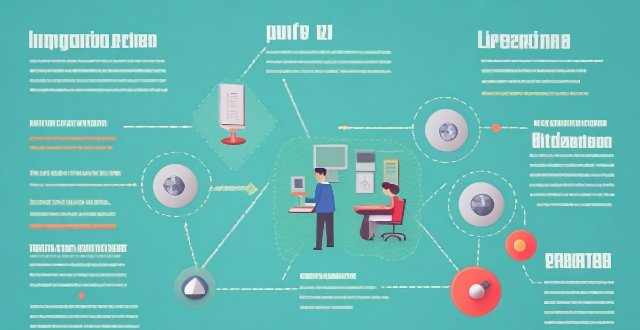
How do I determine the target audience for my infographic ?
Creating an infographic requires identifying the target audience to tailor content and design. The guide includes analyzing the content, identifying demographics, considering interests and behaviors, researching competitors, creating audience personas, and testing and refining the infographic for better resonance with the target audience.

What is the daily schedule like at a typical tennis training camp ?
A tennis training camp's daily schedule focuses on skill enhancement, fitness, and mental preparation through activities like morning practice, theory sessions, match play, and fitness training. The day starts early with wake-up calls around 6:00 AM and ends with an early bedtime to ensure rest for the next day's intensive training. Leisure activities are included to promote relaxation and social interaction among participants.
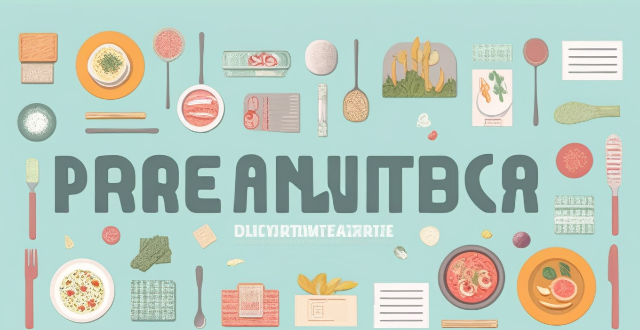
What is the daily routine of a celebrity like ?
The text provides an overview of the daily routine of a celebrity, which includes exercise, breakfast, checking social media and emails, work commitments, lunch break, appearances or events, dinner parties, relaxation time, and bedtime routine. Despite their hectic schedules, celebrities prioritize self-care and maintaining a healthy lifestyle.

How do I incorporate more fruits and vegetables into my daily meals ?
Incorporating more fruits and vegetables into daily meals is crucial for a balanced diet, providing essential nutrients. To achieve this, start the day with fruit smoothies or salads, snack on vegetable sticks or fruit parings, include veggies in lunch and dinner through salads, stir-fries, and soups, and enjoy fruit-based desserts or healthy cookies. Plan ahead, prep fruits and vegetables in advance, and cook in bulk to simplify the process.
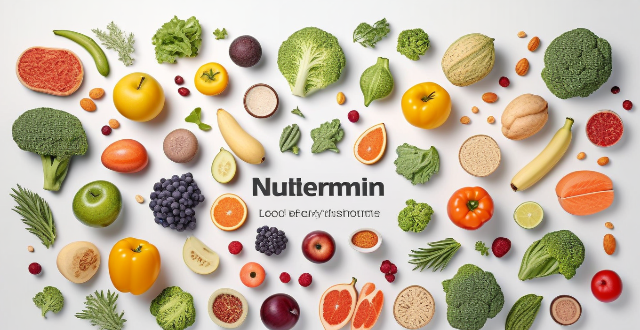
What kind of food and drinks should I consume to enhance my performance during exams ?
Proper nutrition is vital for exam performance, helping to maintain focus and energy. Recommended brain-boosting foods include lean proteins, complex carbohydrates, healthy fats, and antioxidant-rich items. Hydration is also key, with a suggestion to avoid sugary drinks and excessive caffeine. Meal ideas provide balanced options for breakfast, lunch, snacks, and dinner, emphasizing the importance of consistent healthy eating habits in the lead-up to exams.

How can I incorporate aerobic exercise into my daily routine ?
Incorporating aerobic exercise into your daily routine can improve cardiovascular health, burn calories, and enhance mood and energy levels. Here are ways to seamlessly incorporate aerobic exercise into your day: 1. **Morning Vigor**: Start the day with activities like jogging, cycling, or jump roping. 2. **Lunch Break Activities**: Use your lunch break for stair climbing, walking meetings, or yoga. 3. **Post-Work Energy Booster**: After work, engage in gym sessions, outdoor sports, or dancing. 4. **Evening Wind-Down**: Before bedtime, consider gentle exercises like evening walks, Tai Chi, or swimming. 5. **Weekend Adventures**: On weekends, engage in longer duration exercises like hiking, biking, or water sports. 6. **Lifestyle Integration**: Make aerobic exercise a habit by commuting actively, doing active errands, or using fitness trackers.

How can I maintain a professional appearance while staying comfortable throughout the day ?
Maintaining a professional appearance while staying comfortable throughout the day is crucial in the workplace. Here are some tips: 1. Dress appropriately by choosing well-fitted clothes that are appropriate for your job and industry, avoiding overly casual or revealing clothing, and sticking to neutral colors like black, gray, navy, or beige. Pay attention to grooming by keeping your hair neat and tidy, making sure your facial hair is well-groomed if you choose to wear it, and applying deodorant and keeping your breath fresh with mints or gum. 2. Invest in quality footwear by wearing comfortable shoes that are supportive, such as loafers or low heels, avoiding high heels or shoes that pinch your toes, and breaking in new shoes gradually by wearing them around the house before wearing them to work. Take care of your feet by wearing socks or stockings that wick away moisture and prevent blisters, using shoe inserts or insoles for extra cushioning and support, and giving your feet a break by taking off your shoes during lunch breaks or when you're at your desk. 3. Stay hydrated and nourished by drinking plenty of water and bringing a water bottle to work to refill it throughout the day, avoiding sugary drinks and caffeine which can dehydrate you. Snack smartly by packing healthy snacks like fruits, nuts, or granola bars to avoid midday cravings for unhealthy foods, and eating small meals throughout the day instead of three large ones to maintain energy levels. 4. Take breaks and stretch by getting up from your desk every hour or so and taking a short walk or stretch, using your lunch break to go for a walk outside or do some light exercise. Practice good posture by sitting up straight with your feet flat on the floor and your shoulders relaxed, using a chair with good back support and adjusting the height if necessary, and taking breaks from staring at a computer screen by looking away for a few seconds every 20 minutes.